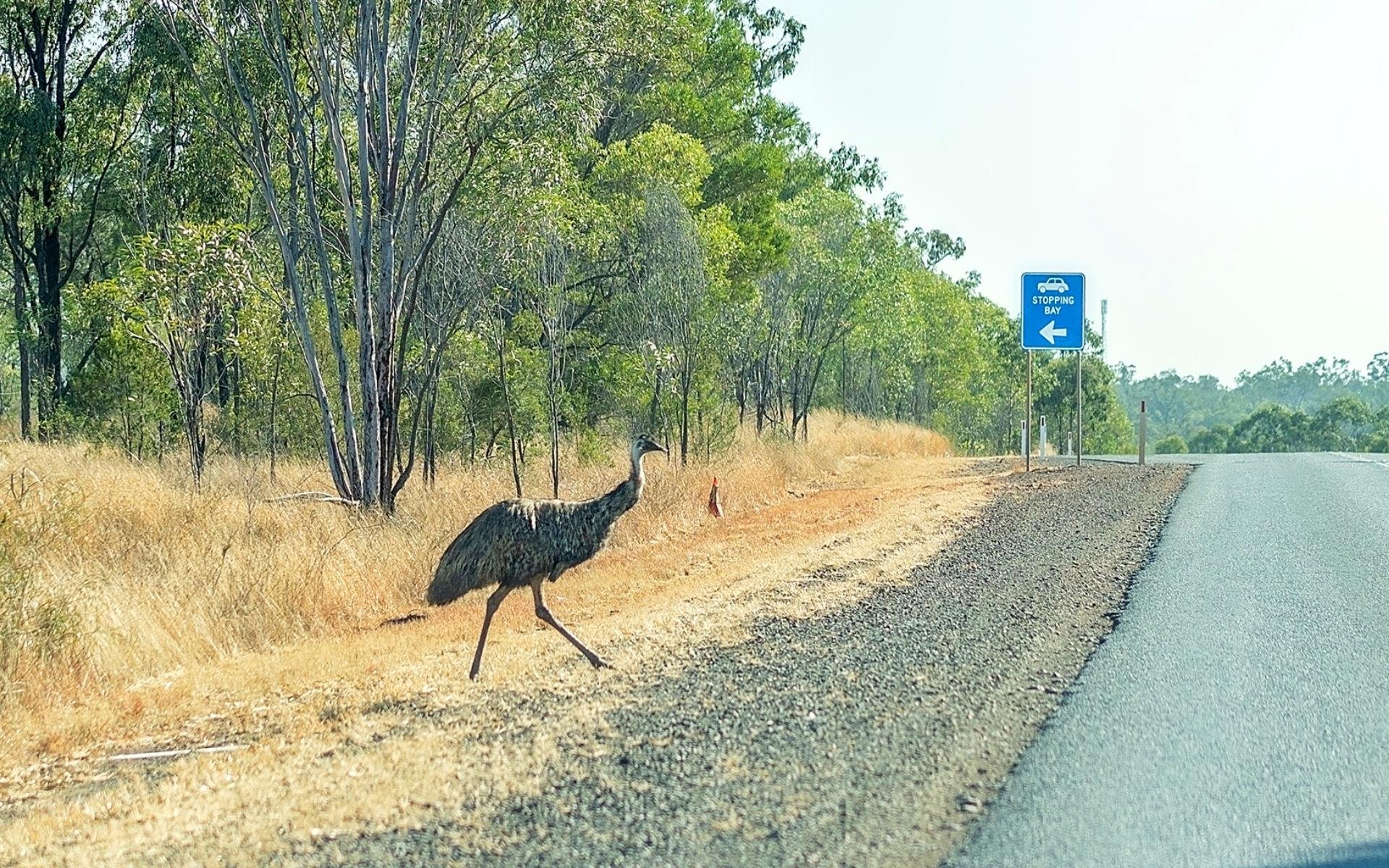
Reducing animal road deaths
Every year in Australia, approximately 10 million animals are killed by cars and trucks. As their habitats shrink, animals are forced to cross roads, increasing the chance of collisions - and these deaths are having huge impacts on species. It is heartbreaking to see, and we need to work together to reduce them.
Tips to help reduce the wildlife road toll
1. Be extra cautious at dawn and dusk
Animals are about during all times of the day, but dusk and dawn can be the most dangerous because animals are more difficult to see. It is also when larger animals, such as kangaroos, wallabies, and wombats are mostly active. During the day, keep an eye out for echidnas, snakes, lizards, and birds, and at night, look for frogs, possums, quolls, and devils.
Always pay attention to wildlife signs and drive slower in these areas and around bends. Slowing down gives animals a chance to move off the road and you more time to stop (if it is safe).
2. Use your high beams
If you're driving at night or dusk and dawn, use your high beams to give you a chance to see any animals and allow you to see the sides of the road more carefully. Once you see the animal and slow down, turn the high beams off as it can daze them and cause erratic behaviour.
3. Install spotlights, lightbars, wildlife car whistles, or ultra sonic sound devices.
If you regularly drive at dawn, dusk, or night, additional spotlights, lightbars, whistles, and sound devices can help save countless lives. Car whistles sit on the front grill of your car and emit a high-pitched sound as air travels through them. While these may not be 100% effective, they notify animals that something is coming and warns them to move away.
4. Never litter
Littering is always bad, however, tossing food out onto the side of the road can bring more animals to the edge of the road, placing them in danger of being hit. Please always keep your rubbish with you until you can dispose of it properly.
5. Carry a wildlife care kit
Be prepared by carrying a wildlife care kit. This should contain strong a list with wildlife rescue numbers, gloves, a pillowcase, towel, torch, rope, sanitiser, and a box - for more visit Connecting Country's wildlife kit.
If you do hit an animal or find an injured animal
1. Stop if it is safe
Only stop if there is a safe place for you to pull over and exit your vehicle. Be sure to turn your hazard lights on and wear bright coloured clothes, such as a hi-vis. Be aware that animals can be dangerous - especially when they are hurt. Do not approach snakes, monitor lizards, bats, or raptors.
Please note, that animals with an X marked on their bodies have already been checked and you do not need to stop.
2. Check if they are alive and if they have young
Be cautious when approaching injured animals and please do not approach snakes, monitor lizards, bats, or raptors.
If the animal is deceased, please check the pouch or surrounding area for a baby. Wombats, joeys, and possums can often survive days in their deceased mother’s pouch. Fourth Crossing Wildlife has tips on how to safely remove babies if you have to.
3. Call wildlife rescue
If the animal has survived or there is a baby, please call a wildlife rescue group to assist. They will assist you in the next steps if they are unable to come - which is why it is important to carry a wildlife care kit in your car. RSPCA have put together a list depending on what state you are in.
4. Move the animal away from the road
If you feel it is safe to do so, please move the deceased animal away from the road, as scavenger animals may be attracted to them and can also be hit as a result.
Drive safely for your own safety
Hitting an animal with a car or motorbike - particularly large mammals like kangaroos, wallabies, emus, and wombats - can also cause severe injuries to people and accounts for 5% of fatal accidents. Drive carefully and abide road signs for your own safety.
About wildlife rescue
There are over 20,000 volunteer wildlife carers in Australia. These compassionate people take in injured, sick, and orphaned animals, caring for and rehabilitating them until they are well enough to be released into the wild. They feed them, give them vet care, keep them comfortable, and let them have space to develop their natural instincts. While the thought of being surrounded by baby animals may seem fun, carers are exposed to an immense amount of suffering and are prone to emotional distress, grief, burnout, and compassion fatigue.
A recent survey found that carers physical workload is on average 32 hours a week, but can be over 100 hours. Almost all receive no government funding and rely on donations from other kind people Over 65% of volunteers (PDF) felt that government agencies neglected the animals.
Other ways you can help Australian wildlife
Sharing this information with others;
Not supporting the kangaroo industry;
Donating to one of the amazing rescue organisations.






